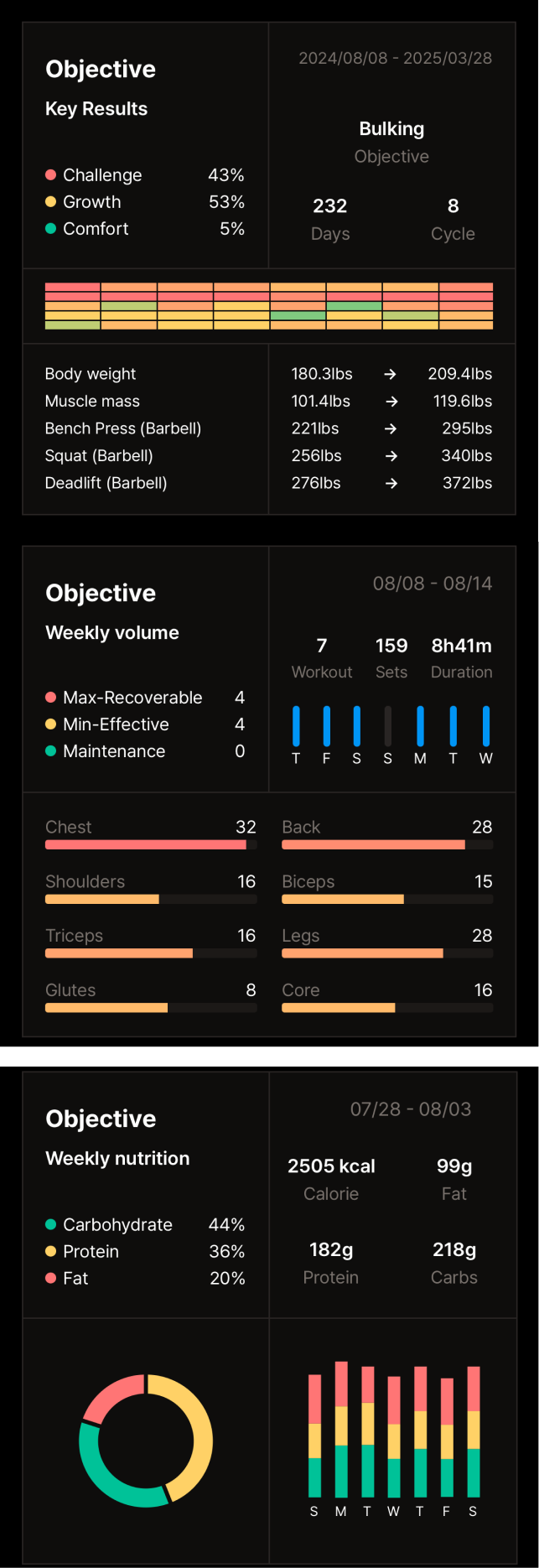Understanding Training Volume (Weekly Set Recommendations)
Imagine stepping into the gym for the first time, eager to transform your physique. You're bombarded with advice: lift heavy, do lots of reps, train every day. The conflicting information leaves you wondering, how much exercise is enough? Are you maximizing your workout potential or doing more harm than good? This article demystifies training volume, providing actionable insights for effective muscle growth.
Understanding Training Volume: The Basics
What is Training Volume?
Training volume is a measure of how much work you perform during a workout. It's calculated by considering the number of sets, reps (repetitions), and the weight lifted. Understanding training volume is crucial for muscle growth and overall fitness improvement. It helps you find the sweet spot between stimulating muscle growth and avoiding overtraining.
The Science Behind Volume and Muscle Hypertrophy
Muscle hypertrophy is the increase in the size of muscle fibers. Training volume plays a crucial role in this process. Research shows a dose-response relationship between volume and muscle growth: more volume, up to a point, leads to greater hypertrophy. However, exceeding this optimal volume can lead to diminishing returns and even hinder progress.
Finding Your Optimal Weekly Sets
Suggested Sets for Different Goals
Your training goals influence your ideal weekly set count. For strength gains, lower volume (fewer sets) with heavier weights is often recommended. Conversely, hypertrophy typically benefits from moderate to higher volume.
| Goal | Weekly Sets per Muscle Group | |----------------|-----------------------------| | Strength | 6-10 | | Hypertrophy | 10-20 | | Maintenance | 4-8 |
This chart provides a general guideline. Individual responses to training volume vary.
Tailoring Volume to Experience Level
Beginners should start with lower volume to allow their bodies to adapt. Intermediate lifters can gradually increase their volume as they gain strength and experience. Advanced athletes can often tolerate higher volumes, but should still prioritize proper recovery. Regularly assess your progress and adjust your volume accordingly.
Balancing Volume and Frequency
Frequency vs. Volume: Which Matters More?
Both frequency (how often you train a muscle group) and volume are essential. Training a muscle group more frequently allows you to distribute your weekly volume across multiple sessions. This can reduce the risk of fatigue and improve recovery compared to concentrating all sets in one workout.
Creating a Weekly Training Schedule
A well-structured training schedule considers both volume and frequency. A beginner might train each muscle group twice a week with a moderate number of sets per session. An advanced lifter might train each muscle group three times a week with a higher volume per session. Rest and recovery are crucial components of any training plan.
Avoiding Common Volume Pitfalls
Signs of Overtraining
Overtraining occurs when your training volume exceeds your body's ability to recover. Symptoms include:
- Decreased performance: You consistently lift less weight or complete fewer reps.
- Persistent fatigue: You feel tired even after adequate rest.
- Increased muscle soreness: Pain lasts longer than usual and interferes with daily activities.
- Loss of motivation: You no longer enjoy your workouts.
- Insomnia: Difficulty falling asleep or staying asleep.
Ignoring these signs can lead to injuries and setbacks. 
Strategic Deloading and Recovery
Deloading involves reducing your training volume and intensity for a short period (typically a week). This allows your body to fully recover and adapt to previous training. Incorporate deloading periods every 4-6 weeks, or as needed, to prevent overtraining and optimize long-term progress. Prioritize sleep, nutrition, and active recovery methods like stretching and light cardio.
Practical Tips for Maximizing Growth
Progressive Overload and Volume
Progressive overload is the gradual increase of stress placed on your muscles over time. This can be achieved by increasing volume (sets, reps, or weight), intensity (weight), or density (reducing rest periods). Start with a manageable volume and gradually increase it over time. Focus on proper form and avoid pushing yourself too hard, too fast.
Utilizing Technology and Tools
Fitness trackers and apps can help manage training volume. These tools allow you to track your workouts, monitor your progress, and make informed adjustments to your training plan. Several apps offer personalized training programs based on your goals and experience level.
Conclusion
Optimizing training volume is essential for maximizing muscle growth. Finding the right balance between volume and frequency, tailored to your individual needs and goals, is key. Regularly assess your progress, listen to your body, and adjust your training accordingly. Apply these principles to your workout routine and watch your fitness journey flourish. For more advanced techniques and specific training programs, explore resources on hypertrophy-specific routines and nutritional strategies.

